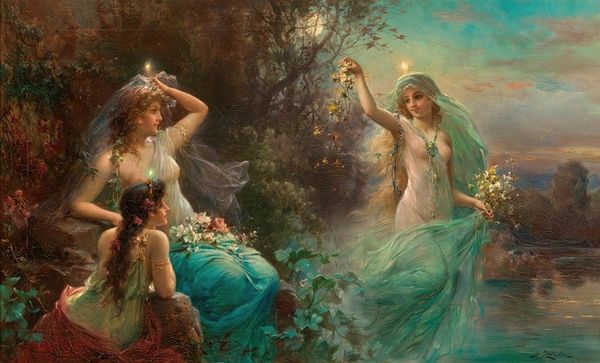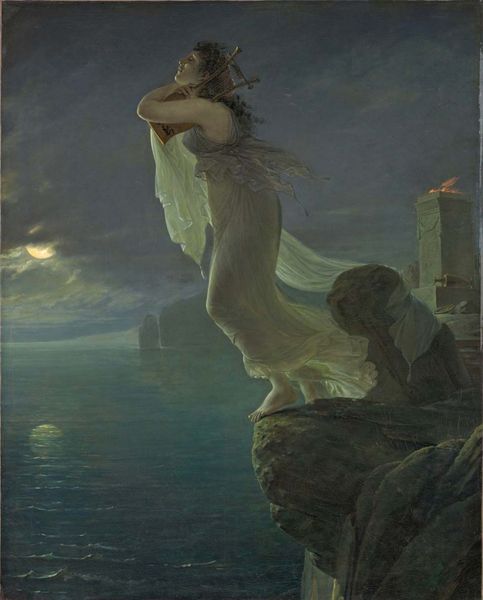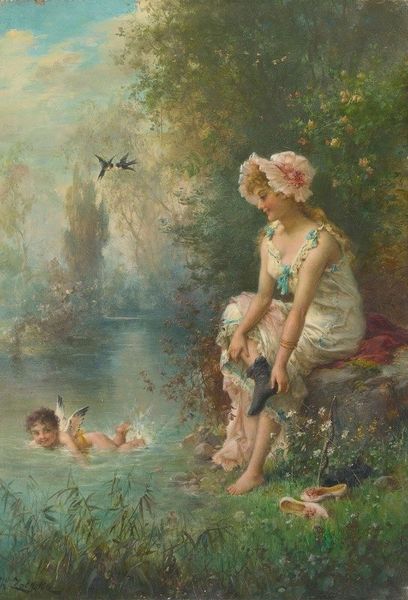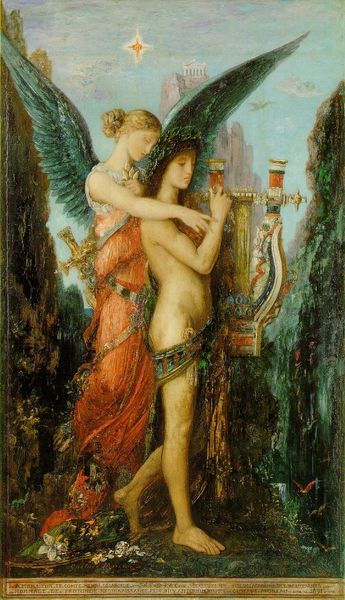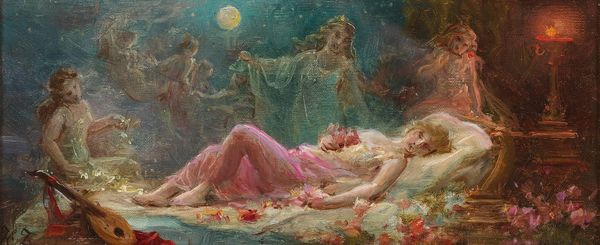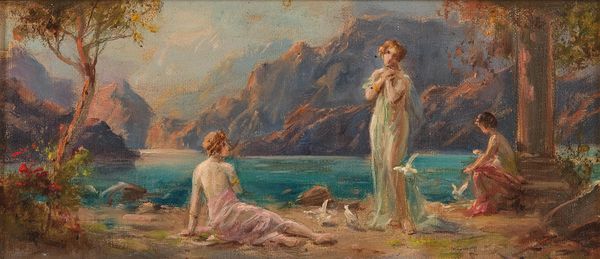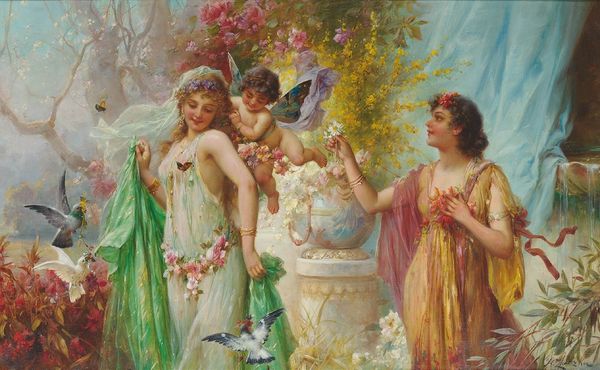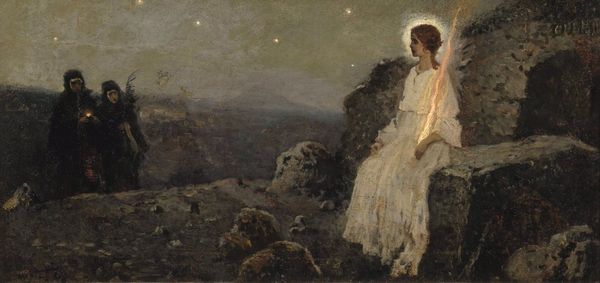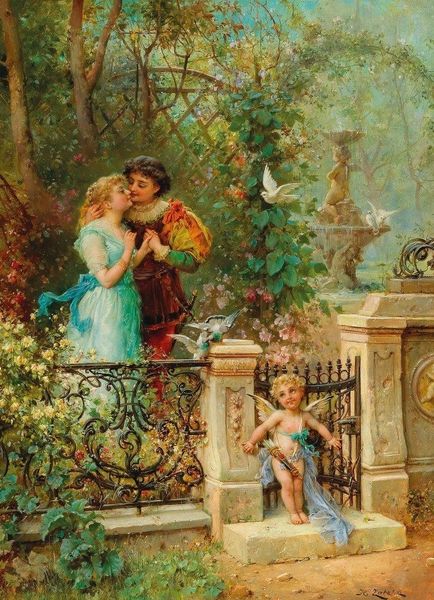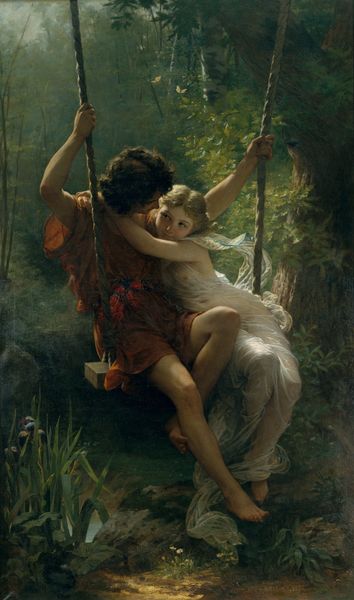
painting, oil-paint
#
gouache
#
painting
#
oil-paint
#
landscape
#
figuration
#
oil painting
#
romanticism
#
mythology
#
symbolism
#
history-painting
#
watercolor
Copyright: Public domain
Curator: Welcome. Before us is a painting by Wilhelm Kotarbinski titled, "After Death." Its date is unknown but judging from the technique it likely comes from the late 19th century, a period deeply engaged with Symbolism. Editor: It immediately evokes a sense of hushed reverence, doesn't it? The muted color palette— predominantly blues and greys— contributes to this almost melancholic tranquility. Curator: Absolutely. And if you observe closely, you'll notice how the landscape serves not merely as backdrop but as a mirror of inner emotional states, a key aspect of Romanticism and Symbolism in which Kotarbinski worked. Consider the figures, seemingly angelic, perhaps guiding souls towards some otherworldly shore. The water lilies, often symbolic of rebirth or purity, support this reading. Editor: The composition is intriguing, the two figures taking up much of the visual field, and the impasto application around the shoulders give depth and materiality. The way light catches their wings seems crucial. See how the illumination is focused on them and on the ethereal star, which seems to function as some source of directional guiding in contrast with the relative darkness which engulfs everything else? Curator: Precisely. Kotarbinski's careful consideration of light is doing some heavy lifting. The singular star serves as beacon; its placement above and beyond suggesting aspiration and hope beyond earthly matters. I can't help thinking how images like this tapped into deeper collective needs, expressing grief, hope, longing for transcendence, as spiritual certainties started waning at this time. Editor: There's a delicacy to their figures, with some loss of contours which brings an ethereal effect on canvas, achieved, as a label tells us, with both oil paint and gouache techniques, allowing for this wonderful translucency to shine out, despite a somber, even tenebrist landscape. Curator: I agree, seeing this, the painting functions as a symbolic map of psychological experience. Its enduring appeal may lie in this powerful condensation of loss and perhaps renewal which echoes deep within our collective memory. Editor: It is also successful as a piece of visual art and as a masterwork of balance, rhythm, and careful chromatic arrangement. One walks away pondering about life and death—but also the sheer magic of Kotarbinski's artistry.
Comments
No comments
Be the first to comment and join the conversation on the ultimate creative platform.
